The two brothers Charles Marcel Keller-Gysin (1901 to 1992) and Paul René Keller (1903 to 1968) from Delsberg and Hans Sackmann-Keller (born 1905), the brother-in-law of Charles and Paul, founded Keller Shipping AG, Basel, in 1945, which was entered in the commercial register on 26.12.1945. Keller Line AG was founded two years later. Throughout the years, Charles M. Keller was the company's great, all-important patron, while his brother Paul ran his own company in Lisbon for many years. Hans Sackmann, who had married the sister of Charles M. Keller and Paul René Keller, Nelly Germaine Keller, ran a flour business from his property at Holbeinstrasse 68, Basel. He gave up the flour trade and became head of finance at Keller Shipping. His building became the headquarters of the shipping company.
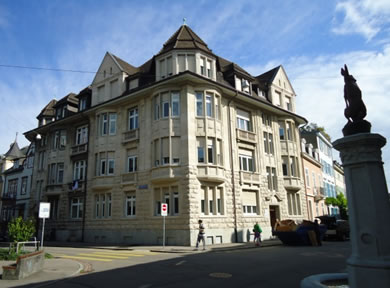
The office building of Keller Shipping Ltd. in Basel
Charles M. Keller and his brother Paul completed an apprenticeship as forwarding agents and gained professional experience in various foreign cities, e.g. Antwerp. His good knowledge of the common commercial languages of Western Europe was an invaluable advantage. During the Second World War, he worked for the KTA (War Transport Office) in Bern and managed the transit of trucks from Portugal and Spain to Switzerland. He was also a federal harbour commissioner in Bilbao. Charles M. Keller sat on various boards of directors of foreign shipping and insurance companies and was a member of the Swiss Maritime Commission and other maritime bodies, such as Membre titulaire of the Comité Maritime International. In his spare time, Charles M. Keller was a keen carnival reveller, skier and golfer. Together with his business partners at the bank in Geneva, he is said to have travelled to Valais to go skiing, which probably explains the Valais ship names.

Charles Keller, the Patron
Charles M. Keller had two sons, Charles Paul and Alfred René Keller. Both also joined the company. Charles P. Keller studied in Basel and graduated with a doctorate in economics. He and his brother Alfred later managed the business until the company was dissolved in 2014. In the military, he reached the rank of Colonel i. Gst. (colonel in the general staff) and represented the shipping company in the Swiss Shipowners' Association. In contrast to Schweizerische Reederei AG and other companies, however, the military did not play a major role at Keller Shipping and nobody asked prospective seamen whether they had served in the military and in what capacity.
The two Keller brothers had initially started out with a chartered Swedish coaster and their first own ship was the LAUPEN, which they commissioned from an Italian shipyard in Viareggio. In July 1948, they were able to take delivery of the new coastal motor freighter. With the LAUPEN, Keller Shipping launched its liner service between Italy, North Africa and Portugal, the so-called Keller Lines. Two years later the MURTEN followed and in 1952 the SEMPACH, both ships were converted British naval trawlers from the Second World War. Unfortunately, the SEMPACH did not have a long life and sank off the Algerian coast in April 1953.
The MISOX of BRAG Maritime AG, Basel (Basler Rheinschiffahrt AG), a sister ship of the LAUPEN, was acquired by Keller Shipping in August 1952 and named GRANDSON. She had already been in service with Keller Lines, but unfortunately BRAG Maritime did not have a happy hand in operating the small freighter and they were certainly happy to abandon their deep sea shipping plans in favour of Rhine shipping, which suited them better. The ARBEDO was taken over at the end of 1954. Two more LAUPEN, GRANDSON and MURTEN, as well as the DORNACH, followed until the end of Keller-Lines in 1994.
Keller Shipping operated a liner service from Genoa to the Red Sea as early as 1953. Unfortunately, not much is known about it, but apparently this service was operated for several years. The old coastal steamer GALLUS from Küstenschiffahrts AG, Goldach was chartered by Keller Shipping and sailed to the Red Sea in the spring of 1953. She called at the ports of Jeddah, Port Sudan, Aden, Assab and Massawa, and on the return trip made a detour to Beirut. According to newspaper reports from Genoa, the ARBEDO and the charter ships MASSAUA and the Norwegian INGRID H (2500 tonnes) sailed to the Red Sea in 1957. This liner service was discontinued at the beginning of the 1960s.
Other charter ships, such as the small freighters FRAMAR, GIOVANNI TOFFOLO, STELLA DEL MARE and SCHEDIR, sailing under the Italian flag, sailed on the traditional route to Portugal. The FRAMAR and SCHEDIR were deployed in 1957 on a fast service from Genoa to Portugal.
Some of the chartered vessels of Keller Shipping (FotoMar Leixões)
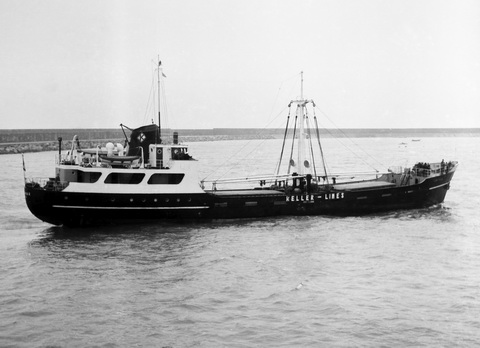
M/S FRAMAR

M/S GIOVANNI TOFFOLO
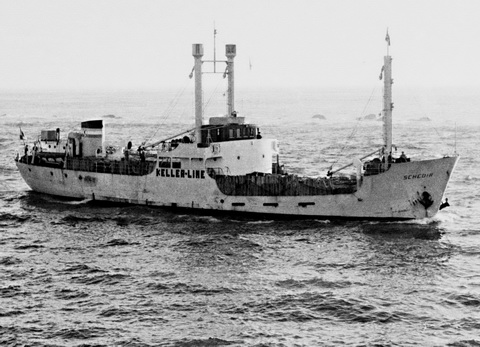
M/S SCHEDIR
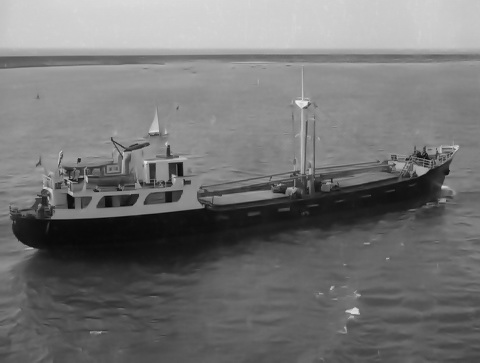
M/S SERGIO P.
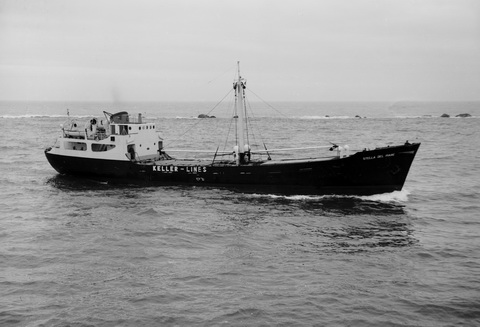
M/S STELLA DEL MARE
In its best years, Keller employed around 50 people in its own building at Holbeinstrasse 68 in Basel. Early on, Keller Shipping opened its own offices in Genoa, Milan, Lisbon, Porto, Marseille, Madrid, Malaga and Casablanca. Most seafarers were familiar with the Keller Marittima office at Piazza Campetto 10 in the historic centre of Genoa, as they had to report there before signing on. Keller Shipping also acted as Swiss agent for some foreign shipping companies and was Lloyd's agent (surveys and damage assessment for vessels and cargo).
As early as 1951, Charles M. Keller was striving for larger ships, but unfortunately he lacked the necessary capital. Together with the Geneva-based private bank Lombard, Odier & Cie, he founded Transoceanique S.A. Geneva (c/o Keller Shipping, Basel), whose Board of Directors consisted of Jean Ernst Bonna and Edmond Barbey, both from Lombard, Odier & Cie, and Charles M. Keller. The company's first ship was the new freighter GENERAL DUFOUR, which was registered under the Swiss flag in June 1951 and operated by Keller Shipping. In the first few years, the GENERAL DUFOUR initially travelled to the west coast of South America a few times, but also to North America and South Africa, before starting her liner service to West Africa in 1955.
The crews of the ships traditionally consisted mainly of Italians, but Keller Shipping also always employed Swiss nationals. Later, of course, Spaniards and Yugoslavs also came on board. The Italians were very well insured with their Cassa Marittima, while the Swiss enjoyed only minimal insurance cover in accordance with Swiss law. Keeping in touch with the family was quite a hassle back then, you could send letters on board and the shipping company would send address lists of the agents to the relatives. So you could send letters on board, but you had to be very careful to send the mail in such a way that it was in line with the ship's schedule. However, many Swiss used the telephone exchange in Genoa or Marseille to call home, often with great difficulty, as there were long waiting times until a telephone booth became free. In emergencies, only the telegram service was available. Even then, catering on board was outsourced to specialised catering companies, e.g. Ligabue in Venice or other companies. Italian food was always served.
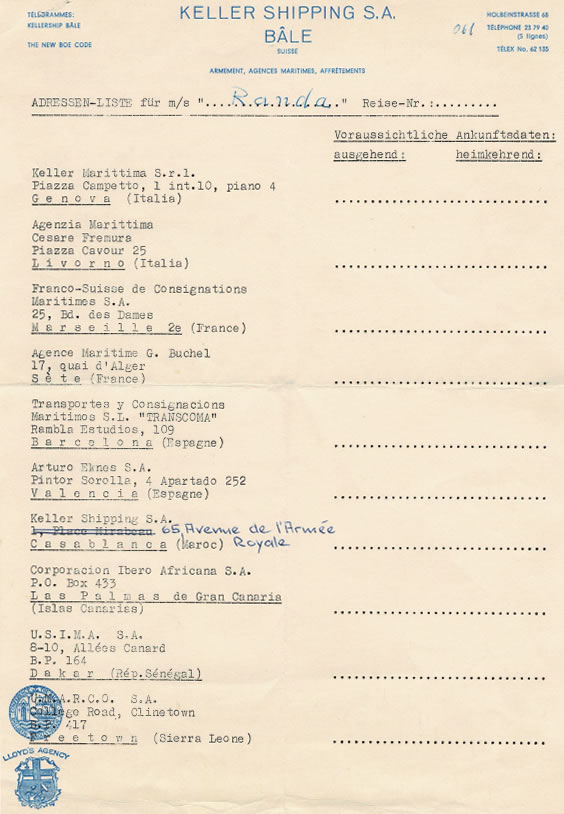
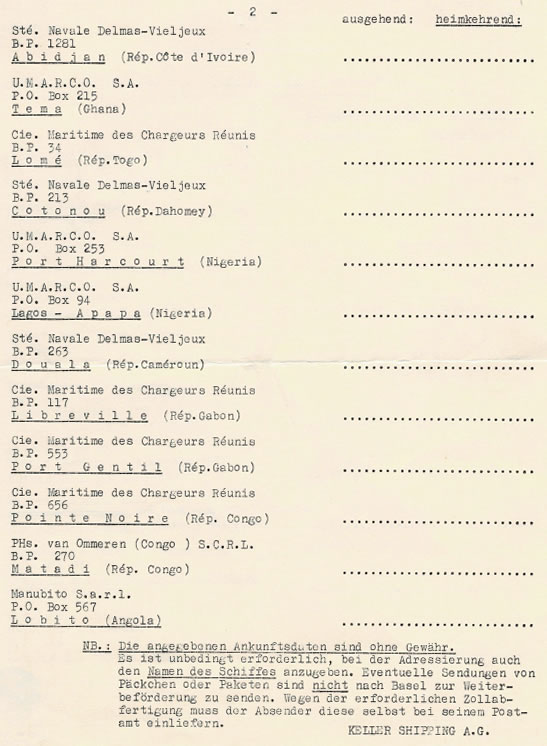
An agency-list of Nautilus-Line from the 1960ties
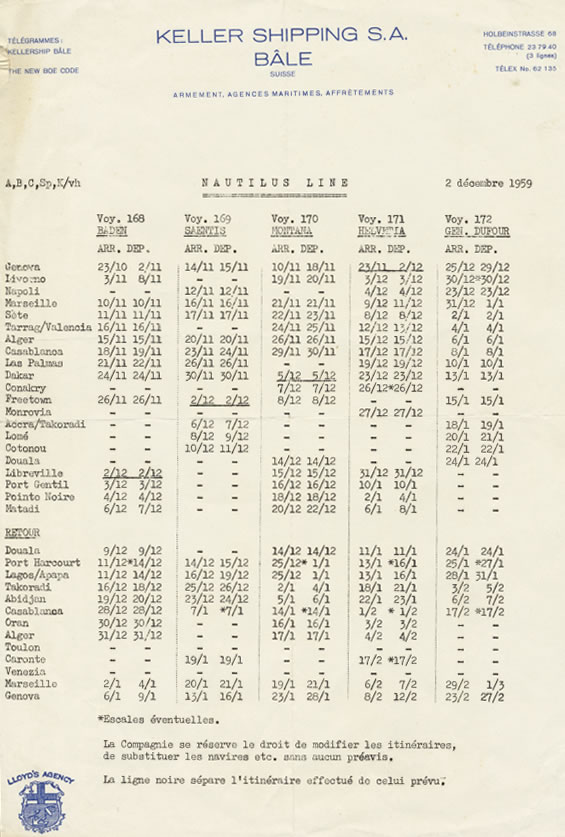
Nautilus Line Timetable 1959
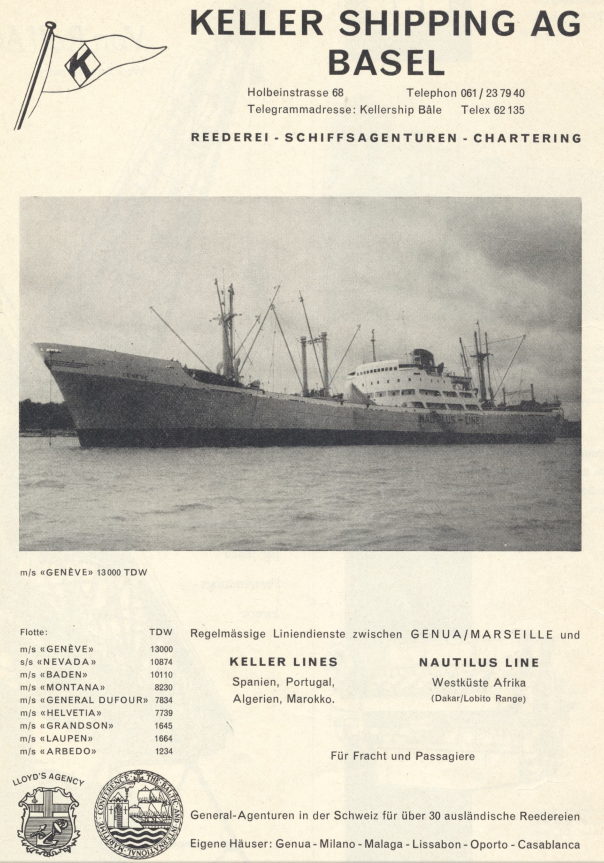
Advertisement in the February 1964 issue of Strom+See
On a trip to Genoa in August 1953, Charles M. Keller paid a courtesy visit to the offices of Nautilus S.A. in Genoa, where he also met Bernhard Müller, the advocate of the Federal Finance Administration, who happened to be present. At that time, the Federal Finance Administration was trying to find a favourable solution for the shipping company, which had got into difficulties. Dr Max Iklé (father of future Federal Councillor Elisabeth Kopp-Iklé), Director of the Federal Finance Administration, and Bernhard Müller, Head of the Legal Service of the Federal Department of Finance, played a key role in dealing with Nautilus S.A. Lugano. In the spring of 1954, the Confederation first approached Transoceanique with the question of whether it would be willing to take over the Nautilus fleet in order to achieve a Swiss solution to the problem, if possible.
On 01.07.1954, Keller Shipping AG, Basel, took over the full commercial and technical management of the Nautilus ships. At the time of this takeover, Nautilus S.A. owned five ships, the two old freighters ST. GOTTHARD and TICINO were sold immediately, presumably at the instigation of Charles M. Keller, while the HELVETIA, the BADEN and the SAENTIS continued to sail for many years under the Keller Shipping flag. According to an entry in the Swiss. Handelsamtsblatt of 09.08.1954, the Board of Directors of Nautilus S.A. was now made up of people trusted by Charles M. Keller. Jean Bonna became the new Chairman, followed by Edmond Barbey and Charles M. Keller became Delegate. Bixio Bossi was allowed to remain on the Board of Directors, but now only had collective signatory powers. In 1955, Transoceanique S.A. took over the shares and thus also the ships of Nautilus S.A. Lugano. Transoceanique S.A. reached an agreement with the Swiss Confederation to pay CHF 12.0 million for the ships, whereby the Confederation had to accept a substantial write-off, probably around CHF 19.0 million, although this can today no longer be determined precisely. On 17.02.1964, Transoceanique Suisse S.A. Geneva bought all the shares in Nautilus S.A., whose registered office had already been moved to Geneva (total share capital: CHF 500'000.-).
Keller Shipping now continued to operate the Nautilus Line from Italy to West Africa (Dakar - Lobito Range) until the 1990s, when the last ship was sold and all shipping activities were discontinued. The fleet of conventional freighters transported general cargo from the western Mediterranean to Africa and on the return trip the ships carried copper, timber, coffee, cocoa, peanuts, animal skins and other local products, as well as palm oil to Europe. The harbour of Genoa served as the shipping company's ‘home port’, where the ships were normally fitted out, crews changed and repairs carried out.
Most of the ships of the Nautilus Line and the Keller Lines also took passengers on board. The ships had cabins for two to a maximum of 12 passengers (international legal requirement). Tourists could book a whole round trip, but other people also travelled by freighter at that time, e.g. from Europe to Africa or vice versa.
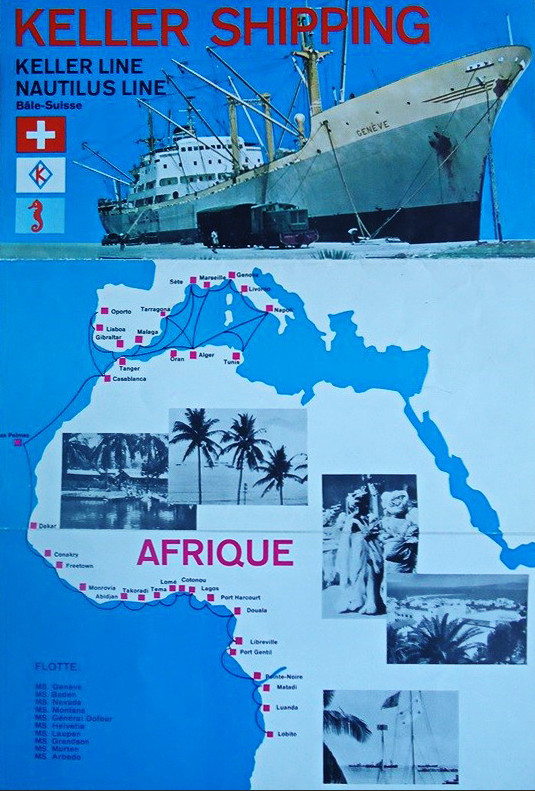
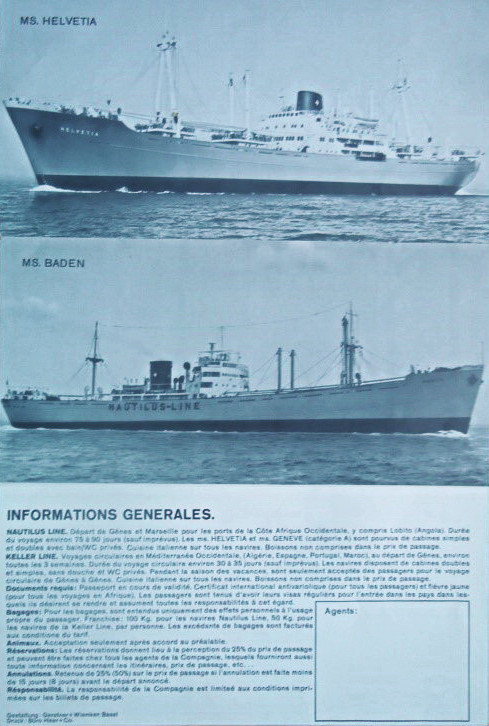
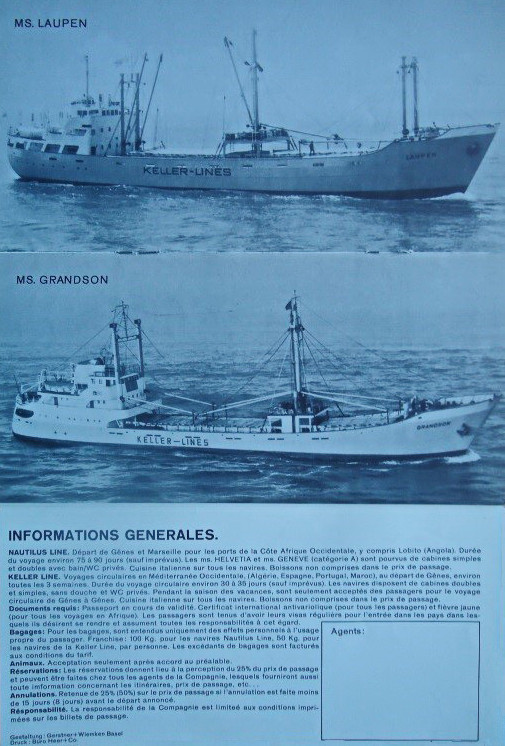
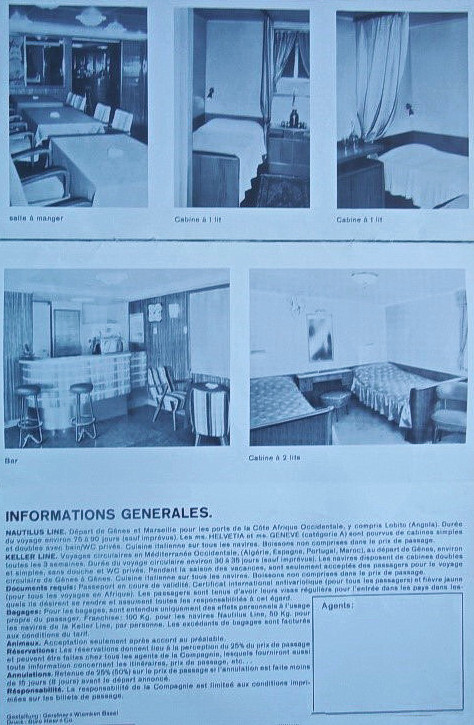
Passenger-Brochure from the early 1960ties
The first inspector to look after the maintenance of the vessels was Fritz Ruprecht *), a relative of Charles M. Keller and a former aeroplane engineer who had flown on board the Do-X (the large flying boat from the Dornier Werke, Friedrichshafen, Germany). Then came Hermann Reinhard, who joined Keller Shipping when Nautilus S.A. was taken over. The subsequent inspectors were former Chief Engineers, Gerhard Baumberger, Josef Bärtschi, Walter Brand and René Dollinger. These people were also well known among the seafarers.
In May 1978, the company took over the newly built ro-ro freighter ANZERE from a shipyard in the Netherlands and deployed it on the Nautilus Line, followed in 1985 by the ro-ro freighter VILLARS, which was bought by a Finnish shipping company and was to be the last ship in the history of Keller Shipping.
In the 1980s, luck turned for the shipping company, the UNCTAD Code **) of 40:40:20, which came into force in 1983, stipulated that 40% of the cargo volume should be allocated to industrialised countries, 40% to developing countries and 20% to the free market. This regulation was also adopted and accepted by the OECD ***). International shipping was at a low point in the 1980s and had considerable overcapacity. French merchant shipping was also in a very difficult situation. The French shipping companies, above all the long-established Delmas-Vieljeux, therefore tried to force the unwelcome competition from Switzerland out of the market with ‘occult’ agreements. Despite the Federal Council's intervention with the French government in Paris, no improvement in the situation could be achieved. Freight volumes continued to decline, which meant that revenue also fell.
In 1985, the last two conventional freighters DAVOS and GENÈVE were sold and only the two ro-ro ships ANZÈRE and VILLARS remained in the Nautilus Line to West Africa. The logistics for the containers and trailers standing around in the harbours became a nightmare for a relatively small shipping company and also very expensive, so that the modern RoRo freighters also had to be sold. The long-established French agency companies in Africa probably also contributed to the decline of the shipping company, as they primarily support the large French shipping companies.
In April 1994, the shipping company sold the last coastal vessel, the third MURTEN, and thus Keller Lines came to an end. The new, large trucks and articulated trucks, as well as the freight ferries, destroyed the business with the conventional coasters. Four years later, the VILLARS was the very last ship to follow, which passed into foreign hands in May 1998, and the Nautilus Line also became history. Until its demise, the company only operated as a Lloyd's agent and as an agent for other foreign shipping companies. The company was deleted from the commercial register at the beginning of 2014.
Finally, we would like to add that some of the old Swiss Keller seamen occasionally get together for a cosy get-together at so-called Keller meetings. The last meeting we know of took place in November 2017 in the club room of the SCS section (Seamen’s Club of Switzerland) Aargau in Dottikon AG.
*) See also the website www.stiftung-schlosslaupen.ch/filme interesting film of the ‘Loupe-Giel
to the board mechanic’ Fritz Ruprecht tells about his life, also from Keller Shipping (German only)
**) UNCTAD, United Nations Conference on Trade and Development
***) OECD, Organisation for Economic Co-operation and Development
Sources:
SwissShips HPS June 2023 + June 2025 JTA